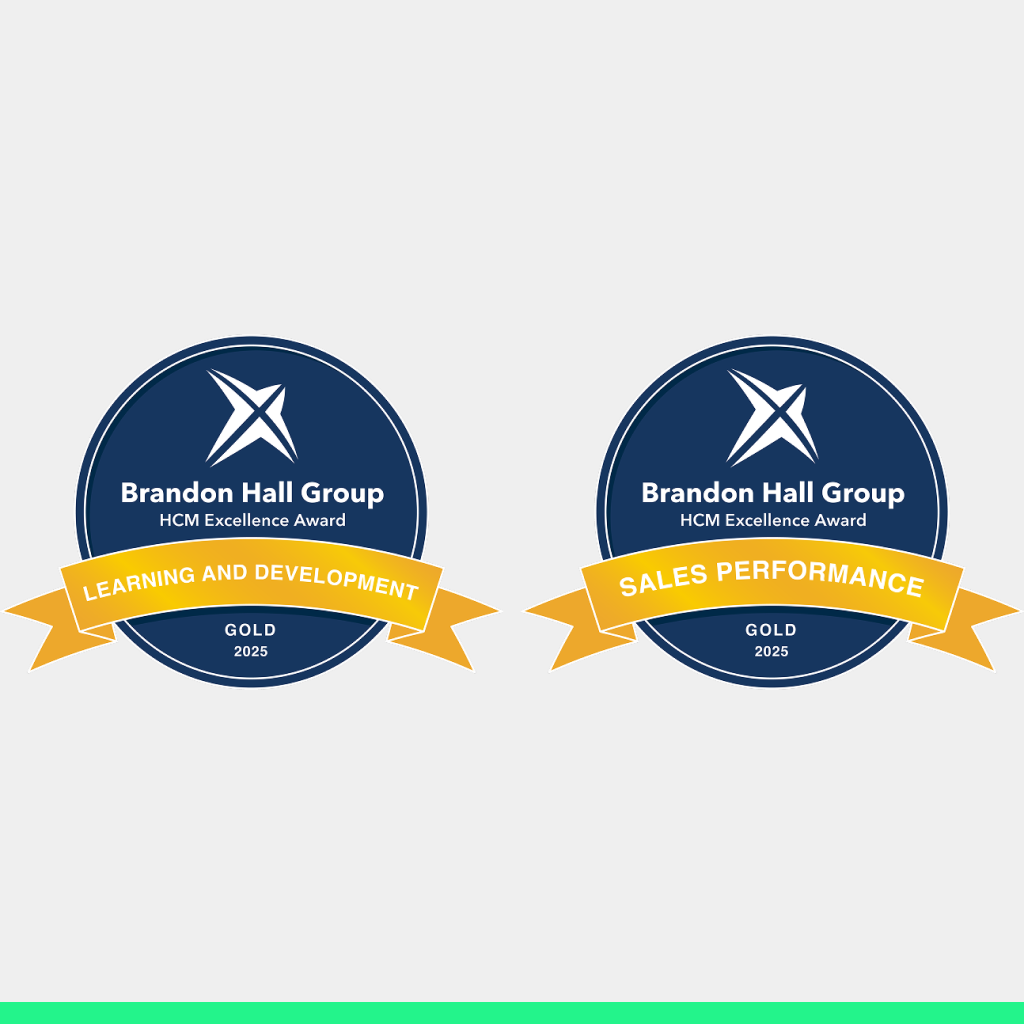Learner outcomes are a baseline requirement for a customer education, partner training, or channel sales enablement program. If learners don’t find the program valuable, it’s a non-starter. But once you’ve established learner value and a set of metrics to demonstrate learner outcomes, connecting the program back to business outcomes is critical.
The impact of customer education and partner training is often easier to see and feel than it is to prove with data. But it’s difficult to convince leadership to continue funding training programs based on positive testimonials alone.
You must demonstrate how training impacts revenue, retention, and other measurable business results.
Start by identifying the business goals your training program supports, then partner with internal teams to find and analyze the data.
Challenges in Measuring the Impact of Customer and Partner Education
Customer education and partner training programs differ significantly from employee learning initiatives or online learning programs as a product.
Participation is voluntary
Unlike employee training, where attendance can be mandated. Customers and partners must see clear value in engaging with the content. This requires a learning experience that is not only informative but also engaging, convenient, and directly tied to their real-world needs and goals.
Learner motivations differ
Employees typically engage in training to fulfill job responsibilities or meet compliance standards. In contrast, customers are trying to solve problems, improve outcomes, or learn how to get more value from a product or service. Partners may be looking to enhance their capabilities, differentiate in the marketplace, or meet contractual enablement goals.
Business impact is harder to trace
Most customer and partner education programs are free for learners, with learners sitting outside your organizational structure. You can’t assign or enforce deadlines or rely on internal tools to track performance. Metrics like logins or course completions are insufficient without a clear tie to business results (e.g., increased usage, reduced churn, higher partner contribution to pipeline).
Aligning Learning Data with Business Objectives
The first step in proving business impact is showing how your learning program supports broader company goals. What KPIs does your organization already use to define success? Show how your learning program impacts these accepted KPIs.
Let’s revisit the example in our post on measuring learner objectives. Imagine you are a financial services organization with a training program to educate financial advisors on the benefits of your products.
A learning objective mapped to a key goal could look like:
- Goal: Launch new product line into a new market
- Learning Objective: Train channel sales organization on both new products and new market
- Indicator: 90% of learners report feeling confident selling into new market
- Data source: Pre/post course surveys
A business objective mapped to that same goal could look like:
- Goal: Launch new product line into a new market
- Business Objective: Increased sales by trained partners
- Indicator: Trained partners have a 7% higher product sales volume
- Data source: Sales data
The Kirkpatrick Model is a well-established framework for mapping learning outcomes to business outcomes. In the 4 levels of the model, levels 1-3 focus on learning outcomes, with level 4 connecting those to business metrics and how the learning program supports organizational goals.
Types and Sources of Business Outcome Data
Measuring business impact often means collaborating cross-functionally within your organization to find the data you need. Engage with these teams:
- Business Intelligence/Data Analytics – Insights on revenue, retention, and customer engagement trends.
- Sales – Data on partner performance and customer acquisition improvements.
- Marketing – Correlations between education and lead generation, content engagement, and brand awareness.
- Customer Service/Support – Ticket reduction, self-service adoption, and satisfaction scores.
What Data to Collect to Measure Business Outcomes
There are three primary areas where customer and partner education programs contribute to measurable business success. Start here if you’re not sure how your program maps to overarching business goals or you’re having a hard time narrowing in on the most impactful metrics.
Business Growth
- Direct sales of training programs (if monetized)
- Faster customer onboarding, reducing time-to-value
- Better, faster product adoption
- Larger ACV
- Shorter sales cycles
- Better channel sales performance, e.g. quota attainment
- Ability to scale without added strain on internal teams
- Increased brand awareness and trust
Customer & Partner Satisfaction & Retention
- Higher Net Promoter (NPS) and Customer Satisfaction (CSAT) scores
- Increased repeat purchases
- Decreased customer churn
- Increased renewal rates for subscription-based businesses
- Longer-term partner relationships
Operational Efficiency & Cost Reduction
- Fewer support tickets and lower customer support costs
- Reduced training costs by shifting from in-person to scalable digital formats
- Faster ticket resolution times
Best Practices for Measuring Business Outcomes from Customer and Partner Education
Track individual and account-level metrics
While individual learner outcomes are critical, training’s true value often emerges at the account level. Organizations should analyze key behavioral patterns:
- Do trained customer accounts renew at higher rates? How much higher?
- Organizations often see improvements once a certain percent of users per account are trained. What is this saturation rate? Once you’ve determined it, you have a new benchmark for your customer success teams.
- Are trained users more likely to engage with cross-selling and upselling offers? If so, what is the average value of this revenue?
- Do partners who complete training generate more revenue overall? What type of training is most impactful–product training, skills training, or a mix of both?
- For channel sales partners, how does training impact quota attainment?
Consider timeframe and program maturity
Tracking both leading and lagging indicators is essential for measuring short-term engagement and long-term business impact. Selecting the right timeframe to measure these impacts is crucial—some training benefits, like reduced churn or increased sales, may take months or even years to materialize, depending on the length of your sales cycle.
Leverage learning data across teams
Training impacts multiple areas of the business. Sharing learning data and insights with relevant teams ensures its value extends beyond education itself.
- Marketing – Are trained users more engaged with events or content? Use training data to refine targeting and messaging.
- Sales – Are trained users more likely to upgrade or purchase additional features? Connect training insights to sales strategies.
- Product – Are trained customers willing to provide feedback or participate in beta testing? Use training engagement as a signal for potential research participants.
Segment trained vs. untrained users
A powerful way to measure learning’s broader influence is to segment customer or partner accounts into trained vs. untrained groups and analyze behavioral differences. Some insights may include:
- Higher engagement levels among trained users
- Reduced support tickets from trained customers
- Increased advocacy and referrals from educated partners
- Churn rates for trained vs. untrained customers or partners
- Time-to-value for onboarded customers or partners with vs. without training
- Sales growth for partners who complete training vs. those who don’t
- Customer Lifetime Value (CLV) differences between trained and untrained users
However, it’s essential to exercise caution – correlation is not causation. While trends may suggest that trained users perform better, external factors may also contribute to these outcomes. Testing and controlled experiments can help refine the understanding of training’s true impact.
Customer and Partner Learning Drive Measurable Business Results
Customer and partner learning programs do more than educate—they drive measurable business results. By aligning learning initiatives with company goals and tracking the right metrics, organizations can prove the ROI of learning and make a lasting impact on their businesses.




